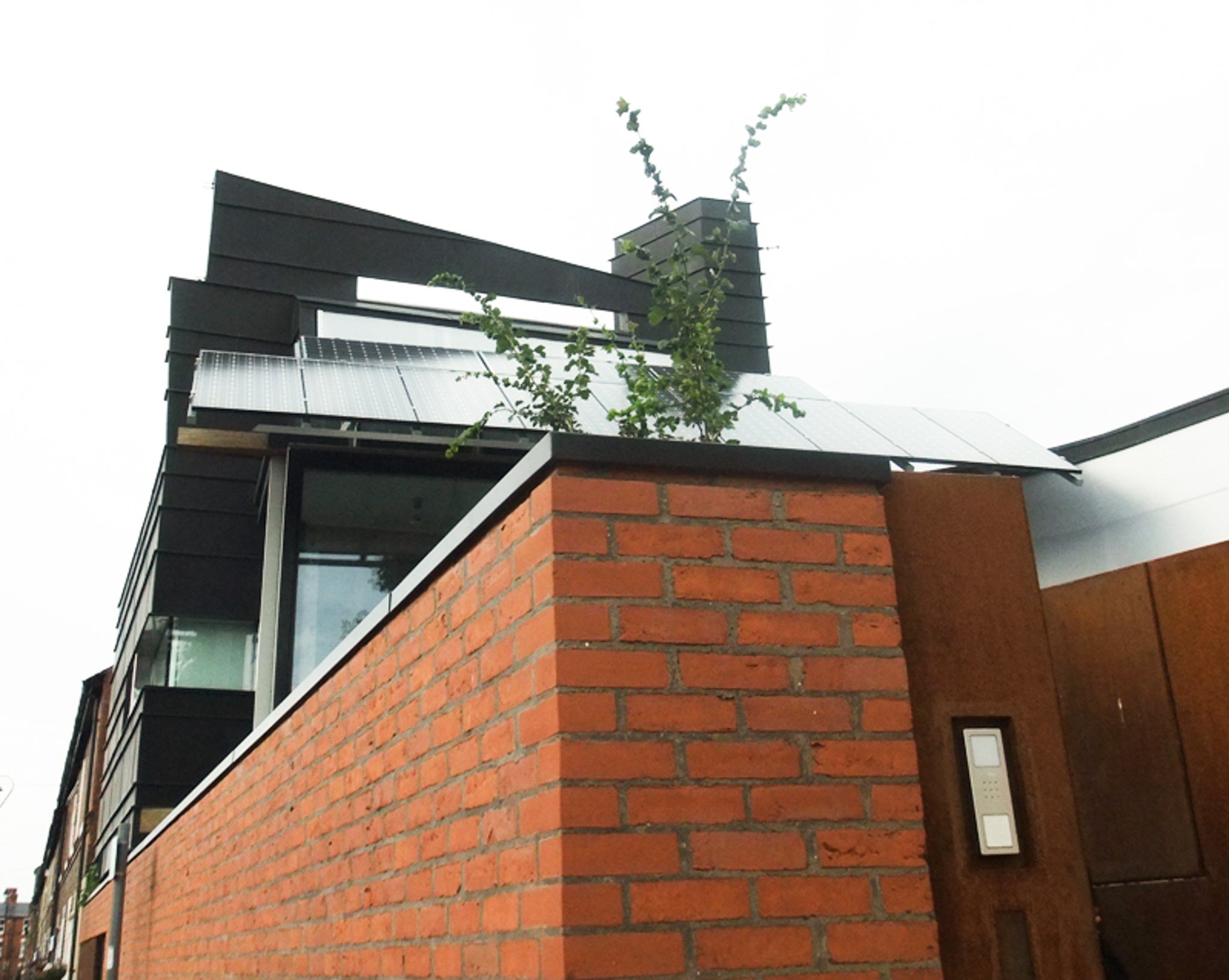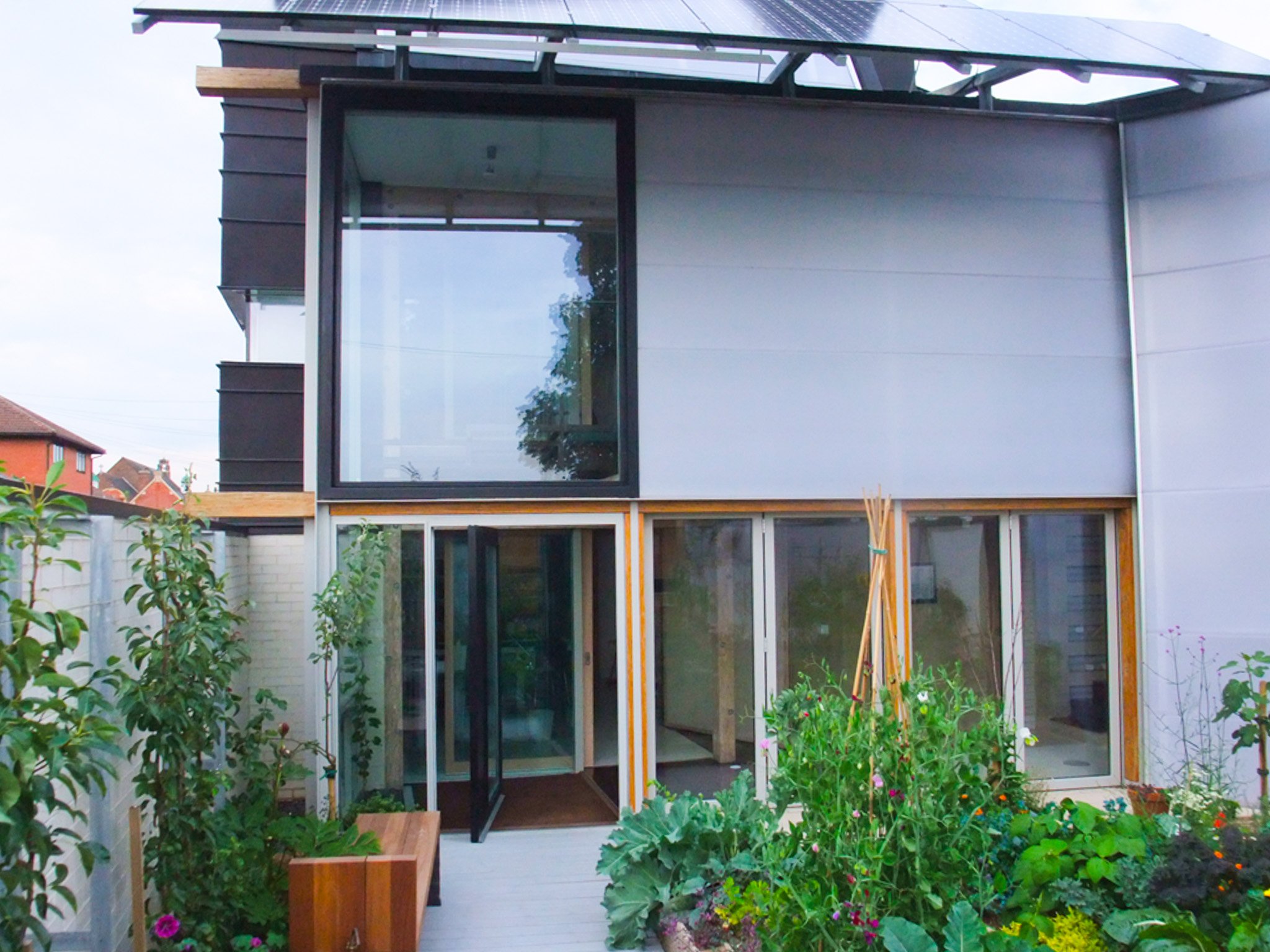Why are UK homes energy inefficient?
The UK has 29 million homes, amongst them are some of the oldest and least energy efficient housing stock in Europe.
The main reason is that our homes are old, and most homes built pre-1925 have solid external walls, which are more difficult and more expensive to insulate than the standard external cavity wall –- made up of two layers with a cavity between them.
Cavity walls were designed to prevent rainwater from leaching into the cracks between bricks and infiltrating the building. However, modern insulation practices have taken advantage of filling the gaps with insulation. Solid walls lack these gaps, requiring more innovative and more expensive approaches to ensure proper insulation.
Have a closer look
If you’re curious about which homes have solid walls and which homes have cavity walls, you can usually tell by taking a close look at the brick pattern.
Typically, cavity walls are in a uniform ‘running’ pattern, laid lengthways with the long side facing out of the wall.
Solid walls are arranged in what appears as a less uniform layout, containing ‘headers’ and ‘footers’. A header refers to the short end of the brick facing forwards out of the wall; A footer refers to a brick that is laid lengthways with its long side facing forwards out of the wall. The bricks interlock, leaving no cavities and are often positioned in differentiated rows.
How important is it that we insulate our walls?
The Royal Institute of British Architects (RIBA) launched a campaign ‘Home for Heroes’ arguing for the mass insulation of England’s interwar suburbs, which contain 3.3 million homes built between 1918 and 1939.
Watch RIBA’s video about the report
These are properties of solid wall construction, high gas reliance and poor insulation, and many “have not had changes made to the walls since construction.”
RIBA found that only 10% of interwar homes achieve an Energy Performance Certificate (EPC) above Band C, and insulating them would cut the country’s carbon emissions by four per cent – equal to the carbon savings made if we completely decarbonised England’s waste and recycling sector.
The reasons why the UK needs to retrofit older homes is strikingly clear. Without reducing domestic fossil fuel consumption and energy inefficiency, the UK will not be able to meet a net zero carbon target and more people will be driven into fuel poverty.
What are people doing about this?
In 2015, groundbreaking legislation passed in Brussels, Belgium that all new buildings and retrofits must be ‘passive’ – a design focused on maximising the external influences over a building, such as sunlight, shading and ventilation, rather than heating from gas boilers and air conditioning units. By insulating the building and making it airtight, the passive home uses 90% less energy than a typical home.
Come 2019, a row of newly built council houses in Norwich, UK replicated the ‘passive’ build, with local authorities and a mix of different funding streams taking the initiative to build long-standing, sustainable housing.
And much closer to home, in the Meadows Nottingham, Julian Marsh and Judy Liebert altered a derelict meat factory into a passive, environmentally-friendly urban home. The development is constructed from hemp insulation and other sustainable materials. It is cleverly constructed in passive house style, trapping the warmth of the sun, using a ground source heat pump, as well as a built-in north-facing larder. The property evades a reliance on energy and is a true sign that low-energy urban living is possible.
The Meat Factory, Nottingham City
If the UK government committed to doing this on a larger scale, could the introduction of a fleet of ultra-low energy homes help us meet our net zero? And would it be enough to meet the target by 2050?
What are the UK Government doing about this?
By 2025, the building of new homes will have to be compliant with the Government’s ‘Future Homes Standard’ (FHS), which aims to decarbonise new homes by replacing fossil fuel heating systems with low-carbon heating (heat pumps, Solar PV) and using high-quality structural materials and insulation.
However, this is too much of a delay and too small of a scale - simply put, it’s a little bit too late.
Pressure Group Insulate Britain said:
‘The UK needs a nationwide programme to upgrade almost every house. The Institution of Engineering and Technology (IET) 2018 report, Scaling Up Retrofit 2050, advises that nearly every home in the UK needs to be upgraded with energy efficiency measures. That is 1.5 homes per minute to the year 2050.’
Unfortunately, the UK government does not yet have a national strategy in place to tackle this. Multiple regional policies are at play, such as the Green Deal and Green Homes Grant, but there is not yet a plan for a housing stock of 29 million, which leaves a large number of properties in need of retrofit.
How can we identify the homes to retrofit?
Your EPC
An Energy Performance Certificate (EPC) rates how energy efficient a building is from A (highly efficient) to G (highly inefficient). EPCs are available for domestic and non-domestic properties and are a legal requirement as soon as a property is marketed for renting or selling.
You can check your EPC here.
Checking your EPC is a handy way of understanding how energy efficient your home is and what can be done to improve it - listing details of improvements that will boost your score, how much they cost and how much they will save on your bills.
England and Wales both have a median energy efficiency rating of band D, showing that the need to retrofit domestic and non-domestic properties is blanketed across the UK. EPCs assist with smaller picture individual changes, but also highlight the bigger picture of UK-wide home energy inefficiency
The EPC of a property can also help to signpost which people, as well as properties need urgent help.
Fuel poverty
In England, 4.1 million to 7.5 million households live in fuel poverty – ranging from low-income households with a low EPC rating (3.26 million) and the official number of households who spend more than 10% of their income on energy bills (7.39 million).
To provide context, in 2019 the average estimated energy cost per year for an older home was £885 compared to that of £399 for a newer home – and that is before the staggering rise in energy bills.
As the ongoing fuel crisis causes energy bills to rise, making existing homes more energy efficient will not only strive toward net zero targets but also tackle the constant, ongoing threat of fuel poverty.
The benefits of retrofit are clear, but knowing what it entails and where to begin can be difficult.
For a more detailed look into the measures and processes that make up a retrofit journey, click the button below.
Sources:
What is solid wall insulation? - Insulation Superstore Help & Advice
Insulate Britain - Insulate Britain
UK homes losing heat up to three times faster than European neighbours | Press Release (tado.com)
What is solid wall insulation? - Insulation Superstore Help & Advice
How Brussels went passive - passivehouseplus.ie
https://passivehouse.com/02_informations/01_whatisapassivehouse/01_whatisapassivehouse.htm
About fuel poverty – End Fuel Poverty Coalition
Energy efficiency of housing in England and Wales - Office for National Statistics (ons.gov.uk)
Marsh:Grochowski Architects, Nottingham | The Meat Factory (marsh-grochowski.com)





